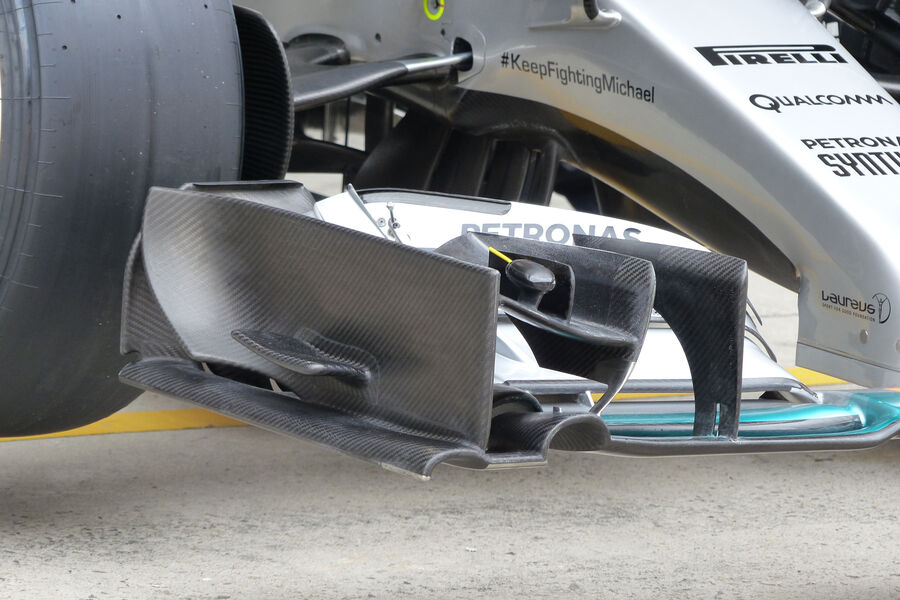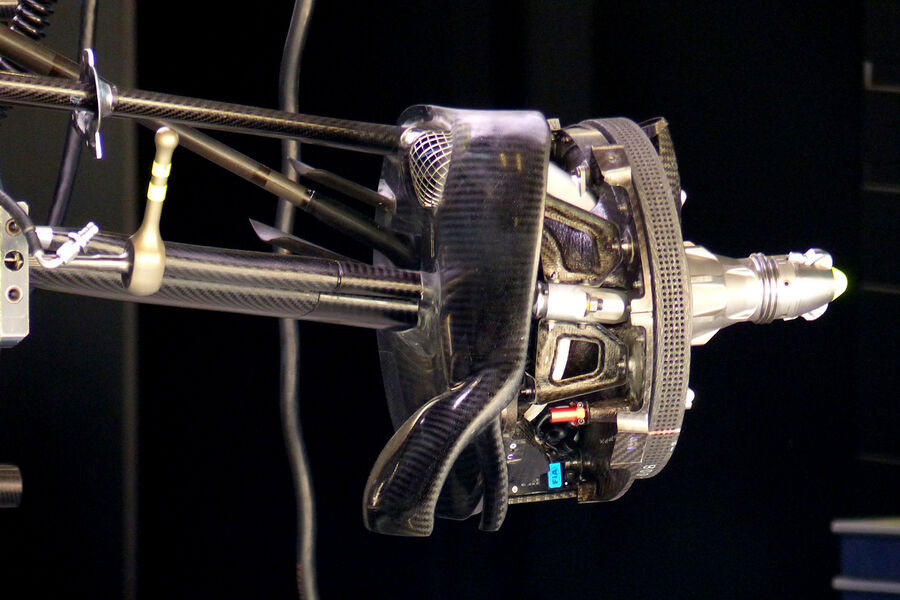- Login or Register
No account yet? Sign up

Possibly.PlatinumZealot wrote:Possibly hydraulic anti-roll is still in place.
Maybe the hydraulic anti roll allows the car to ride over curbs without activating the mechanical ant-roll and unsettling the car.
For anti-dive control... maybe it is similar.. The initial impulse of the car diving is taken in by the hydraulic fluid in the reservoir. Sounds OK?
The Lotus 99T already had a system like you describe, but it's banned since 1993...DaveW wrote:Possibly.PlatinumZealot wrote:Possibly hydraulic anti-roll is still in place.
Maybe the hydraulic anti roll allows the car to ride over curbs without activating the mechanical ant-roll and unsettling the car.
For anti-dive control... maybe it is similar.. The initial impulse of the car diving is taken in by the hydraulic fluid in the reservoir. Sounds OK?
Another thought: they could connect the hydraulics to a pitot tube via an hydraulic multiplier. I've no idea whether that would be practical, or even legal, but it should do the right thing.
Last year many teams and pundits thought that Mercedes had the best tyre conservation on the grid. But that could be because they were so quick the pace drop off was hardly noticeable.ringo wrote:That problem has been with them from shumacher days, and it never left. Last year they also had the issue but it was less noticable because of the power advantage they had, but Williams came close to them a few times because their FW car had treated the tyres better.De Jokke wrote:To stay positive despite the horrifying strategy, at least we've finished with two cars in a very difficult race for man and machine.
Also: 4 out of 4 car finishes. So well done merc.
Now get that tyre deg in hot temps up to scratch and start dominating again
I don't think Merc will be able to solve this problem for a while. It's in their DNA.
I knew that system quite well, actually. The 99T was fully active, and (on track) the two pitot tubes were coupled and used to provide a measure of dynamic pressure. This allowed downforce and downforce distribution to be computed which were, together with loads derived from inertial measurements, subtracted from measured loads to provide estimates of road inputs. The objective was to simulate a suspension that reacted to road inputs, ignoring all else. The video showed a (typical) mechanic's "trick". Here is one showing it working properly. As you say, active suspension was banned long ago.Jolle wrote:The Lotus 99T already had a system like you describe, but it's banned since 1993...
Mmm, I can't remember where I read it, but I'm pretty sure Toto (or another team member) said that they struggled for pace in Malaysia last season relative to other tracks. I think their performance this year was affected more by less efficient cooling compared to Ferrari, and slower top speeds.J0rd4n wrote:Last year many teams and pundits thought that Mercedes had the best tyre conservation on the grid. But that could be because they were so quick the pace drop off was hardly noticeable.ringo wrote:That problem has been with them from shumacher days, and it never left. Last year they also had the issue but it was less noticable because of the power advantage they had, but Williams came close to them a few times because their FW car had treated the tyres better.De Jokke wrote:To stay positive despite the horrifying strategy, at least we've finished with two cars in a very difficult race for man and machine.
Also: 4 out of 4 car finishes. So well done merc.
Now get that tyre deg in hot temps up to scratch and start dominating again
I don't think Merc will be able to solve this problem for a while. It's in their DNA.












#aerogollumturbof1 wrote: YOU SHALL NOT......STALLLLL!!!
It's a very different wing- skip back a page for a good look at the old one. The outer cascades now 'start' much earlier, whereas before the three 'main' flaps extended all the way along.F1NAC wrote:Is this china "new wing"?edges of wing where are cascades are different painted and looks little bit different from malaysia. Also cut on mainplane is a bit different